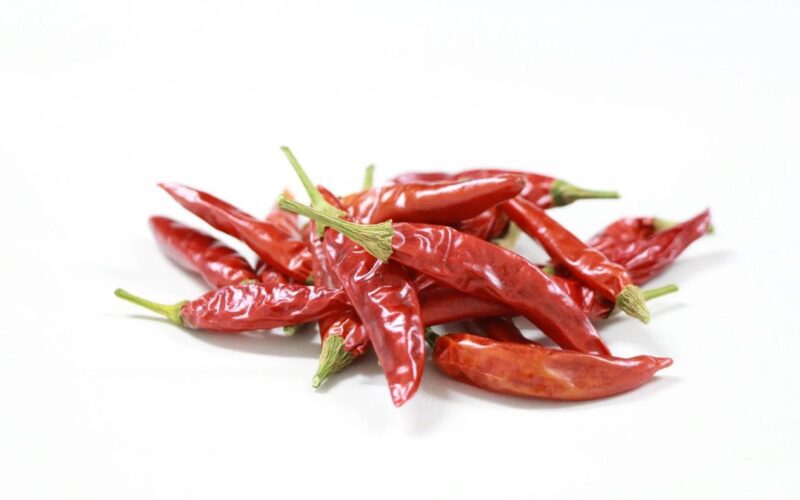Chilies, a fiery staple in kitchens around the world, are more than just a spice—they’re botanical wonders with a rich history and a palette of fascinating facts. From their incredible heat to their diverse varieties, chilies have left an indelible mark on global cuisine. In this article, we unravel the top 10 intriguing facts about chilies that make them a culinary sensation.
Capsicum Chronicles – The Botanical Family
Chilies belong to the Capsicum genus, a diverse family of flowering plants that includes various peppers, such as bell peppers and jalapeños. Capsicums are native to the Americas, and their cultivation has spread across the globe, influencing cuisines from Asia to Africa. The Capsicum family showcases a wide range of flavors, colors, and heat levels, making it a dynamic addition to culinary landscapes.
Scoville Scale – Measuring the Heat
The Scoville Scale is the universal measure of chili pepper heat, quantifying the amount of capsaicin—the compound responsible for the fiery sensation. Developed by pharmacist Wilbur Scoville in 1912, the scale ranges from mild to scorching. Bell peppers have a rating of zero Scoville Heat Units (SHU), while the Carolina Reaper, one of the hottest chilies, tops the scale at over 2 million SHU. This scale helps chili enthusiasts navigate the spice levels in their culinary adventures.
Culinary Uses Beyond Heat
While chilies are renowned for their heat, they bring more to the table than just spiciness. Chilies contribute unique flavors to dishes, enhancing the overall taste profile. From the fruity notes of habaneros to the smokiness of chipotles, different chili varieties add depth and complexity to a wide array of cuisines, making them a versatile ingredient in both savory and sweet dishes.

Health Benefits of Chilies
Beyond their culinary appeal, chilies offer a host of health benefits. Capsaicin, the compound responsible for the heat, has been linked to metabolism boosting, pain relief, and even potential anti-cancer properties. Additionally, chilies are rich in vitamins A and C, providing a nutritional punch to dishes. Their spicy kick not only tantalizes the taste buds but also brings potential health perks to those who embrace the heat.
Chili Evolution and Hybridization
The evolution of chili peppers is a fascinating journey that spans thousands of years. Initially cultivated in the Americas, chilies made their way to Europe and Asia through trade routes, transforming global cuisines. Over time, selective breeding and hybridization led to the development of countless chili varieties with distinct shapes, sizes, colors, and flavors. The evolution of chilies showcases the ingenuity of farmers and the adaptability of these fiery plants.
Chilies in Cultural Traditions
Chilies have woven themselves into the fabric of cultural traditions around the world. From the spicy curries of India to the salsas of Mexico, chilies are integral to the culinary identities of many regions. In some cultures, chilies are believed to have protective and purifying properties, while in others, they symbolize passion and vitality. Exploring the cultural significance of chilies adds a layer of depth to their role in global cuisine.
Chili Festivals – A Spicy Celebration
Chili festivals have become popular events celebrating the diversity and heat of chili peppers. These gatherings feature everything from chili cook-offs and tasting competitions to entertainment and educational sessions. Attendees can explore the vast world of chilies, learn about different varieties, and enjoy dishes that showcase the versatility of this beloved spice.

Global Hotspots of Chili Cultivation
Chili peppers thrive in a variety of climates, leading to their widespread cultivation across the globe. Countries like India, China, Mexico, and Thailand are among the top producers of chilies. The cultivation of different varieties in various regions contributes to the unique flavor profiles of regional cuisines. Exploring the global hotspots of chili cultivation provides insight into the vast and interconnected world of chili production.
Capsaicin Tolerance – A Personal Journey
Capsaicin tolerance varies among individuals, leading to a diverse range of reactions to spicy foods. Some people revel in the intense heat of the hottest chilies, while others prefer milder options. Capsaicin tolerance can be influenced by genetics, exposure to spicy foods from an early age, and personal preferences. Understanding one’s tolerance level adds a layer of personalization to the culinary experience with chilies.
Chilies in the Art of Fermentation
Fermented chili products, such as hot sauces and kimchi, have gained popularity for their unique flavors and probiotic benefits. The process of fermentation not only preserves chilies but also enhances their taste and nutritional value. Exploring the art of chili fermentation opens up a world of tangy, complex flavors that complement a wide range of dishes.
Chilies, with their fiery personalities and diverse characteristics, have become more than just a spice—they are culinary companions, cultural symbols, and botanical wonders. From their origins in the Americas to their global influence, chilies continue to spice up our lives in more ways than one. As we navigate the Scoville Scale, savor diverse chili varieties, and appreciate their cultural significance, we embark on a flavorful journey that transcends borders and brings people together in the shared love of spice.










